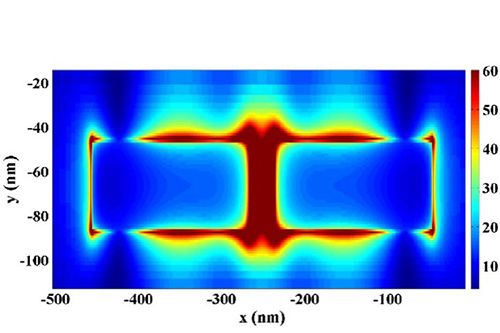By Katherine Skipper, First year, Physics PhD
The technology could vastly improve the efficiency of testing.
Funding has been awarded to Bristol researchers in the department of Electrical Engineering to develop a rapid, low cost COVID-19 detection system.
The team, led by Professor Martin Cryan and with funding from the Elizabeth Blackwell institute, will use devices called ‘Nano-antennas’ to detect fluorescent molecules in the virus. They hope to use these antennas to build a biosensor which is highly sensitive, but small enough to be handheld.
We are supporting vital #COVID19 research to tackle the global health crisis. More than 40 projects have now been funded in five key areas: virus natural history, therapeutics and diagnostics research; epidemiology; clinical management; vaccines; and ethics and social science. pic.twitter.com/54o2jcR86W
— Elizabeth Blackwell Institute (@EBIBristol) June 10, 2020
Rapid detection and diagnosis are vital to controlling the spread of COVID-19. When a person presents symptoms, a rapid response can save not only their life, but the lives of those they would otherwise infect. Without a licensed vaccine, and as lockdown measures ease around the world, successfully tackling the pandemic depends on eliminating unnecessary delays in testing and tracking.
Existing diagnostic approaches use gene sequencing to identify the genetic material (RNA) of the virus. This is a lengthy process because it involves determining the molecular structure of the RNA. The aim of this research is to instead ‘tag’ the virus with a fluorescent chemical (fluorophore), which binds selectively to the RNA and emits light only when attached to its target.
The fluorescence of the tagged virus can then be observed directly, allowing for identification without sequencing. This could vastly improve the efficiency of testing, but detection is so far due to the limited low intensity of the light from the tagged RNA. Nano-antennas will be used to enhance the fluorescence (increase brightness) so that it is visible under a microscope.

A common type of nanoantenna is a metal rod a few hundred-billionths of a metre in size. An array of hundreds or thousands of these has extraordinary optical properties not shared by the individual antennas.
The array selectively enhances certain wavelengths of light, which are determined by the size and spacing of the antennas. It would therefore be possible to design an array which amplifies the fluorescent signal from tagged COVID-19 RNA.
The researchers are experienced in the design and fabrication of these arrays. In order to adapt their expertise to the biological aspect of the pandemic, they will collaborate with researchers at the University of Cardiff, who are developing techniques to extract virus DNA and RNA.
‘The main priority is helping keep people safe’: the Bristol teen whose gadget is helping fight Covid-19
Bristol research has global implications for COVID-19 drug and vaccine development
A nanoantenna based device could be smaller, cheaper and faster than existing detection methods. On the importance of this research, Professor Cryan said: ‘the development of a rapid, low-cost test for COVID-19 is of critical importance for tackling this pandemic. We think our approach is also flexible enough to be used in any future pandemics.’
The researchers plan to work with industry to develop ‘lab on a chip’ technology, where virus detection will be integrated into a handheld device.
Featured: University of Bristol
What do you make of the use of Nanotechnology?







